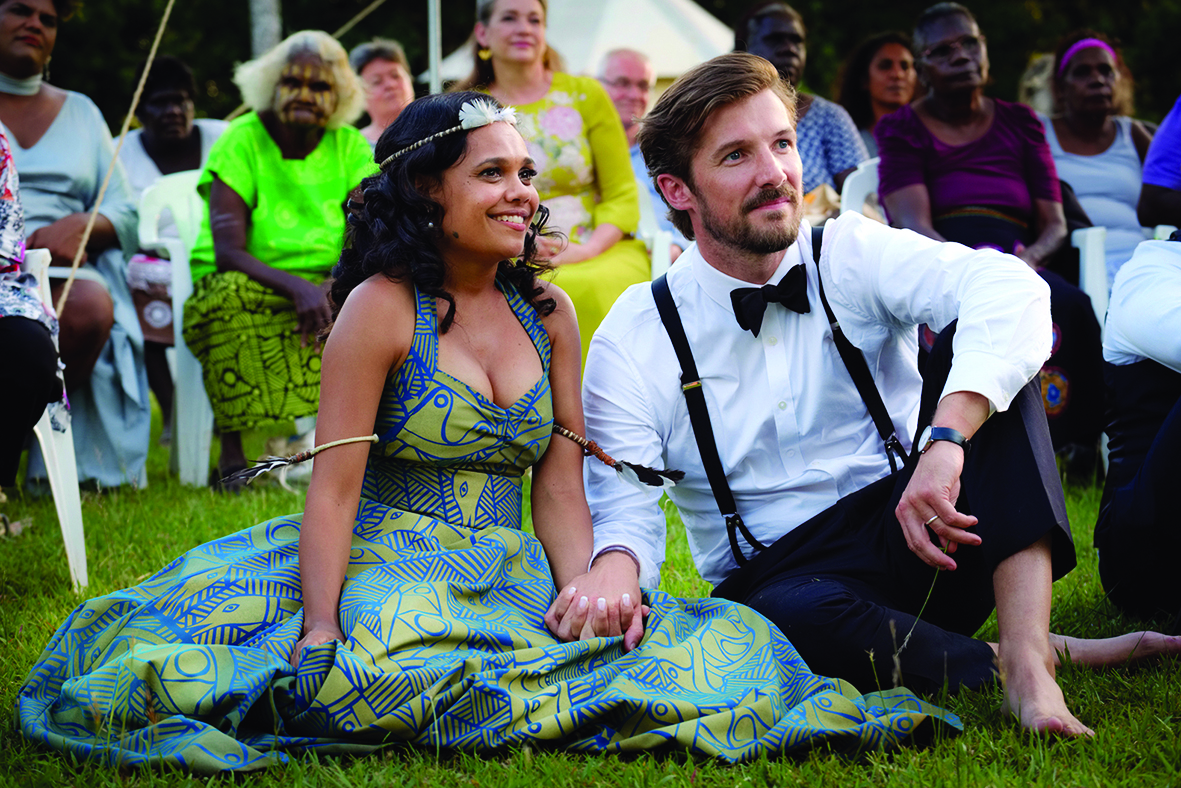Lauren (Miranda Tapsell) is a confident young Aboriginal corporate lawyer living in Adelaide; her partner, British immigrant Ned (Gwilym Lee), is a Crown prosecutor. While she is thriving in her career (albeit clumsily – trying to hide broken heels under her desk, frantically brushing pastry sugar off her lapel), he is struggling with the morals of working to prosecute elderly women for minor infractions. She is offered a promotion; he quits and, rather than telling Lauren he has done so, proposes.
It is, of course, a ‘yes’ – but there is quickly a catch: her boss, Hampton (an icy Kerry Fox), has offered her an immediate ten days off work before her promotion kicks in, and Lauren wants to get married now. In Darwin. With her parents. Easy enough, thinks Ned. But, in Darwin, there’s just Lauren’s dad, Trevor (Huw Higginson), hiding himself in the pantry and crying to Chicago’s ‘If You Leave Me Now’. Her mum, Daffy (Ursula Yovich), is nowhere to be found.
Top End Wedding (2019), directed by Wayne Blair from a script by first-time feature writers Tapsell and Joshua Tyler, is a rare incursion by Australian cinema into romantic comedy. The film’s promotional poster captures the tropes of the genre straightaway: the smiling woman, the perhaps slightly apprehensive man, the dog (a staple of comic relief in a genre already defined by its comedy). Its trailer, too, captures this spirit: the funky music, the escalation of the stakes, the jokes, the girlfriends, the awkward soon-to-be in-laws, the dog embarrassed and laying its head onto its paws.
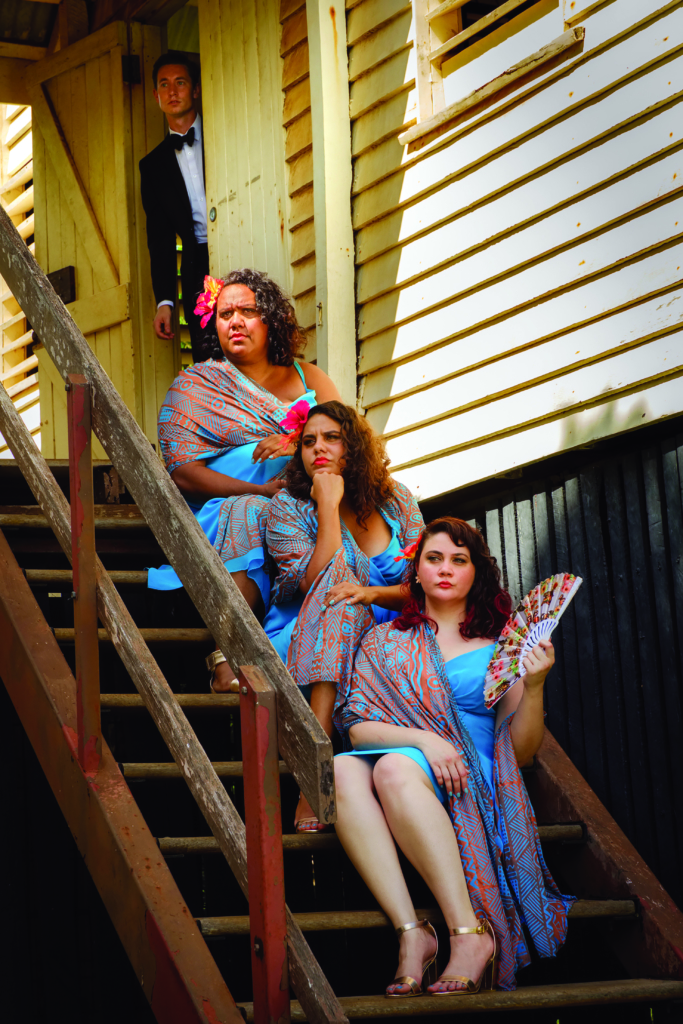
The romantic comedy has a long history in Hollywood – notable classics include It Happened One Night (Frank Capra, 1934), The Philadelphia Story (George Cukor, 1940) and The Battle of the Sexes (Charles Crichton, 1960). It was When Harry Met Sally (Nora Ephron, 1989), though, that truly launched the rom-com into a critical blockbuster genre; its success gave rise to an explosion of such films, with the late 1990s and 2000s seeing the rom-com’s heyday.[1]See Caroline Siede, ‘After When Harry Met Sally, Almost Every Rom-com Tried to Have What Nora Ephron Was Having’, The A.V. Club, 16 March 2018, <https://www.avclub.com/after-when-harry-met-sally-almost-every-rom-com-tried-1823690771>, accessed 21 May 2019. Despite occasionally coming at us from the UK, the romantic comedy is a very Hollywood product – and a largely lucrative one at that. At the genre’s most recent peak in 1999, romantic comedies made up 9.9 per cent of the market share at the US box office.[2]See ‘Box Office History for Romantic Comedy’, The Numbers, <https://www.the-numbers.com/market/genre/Romantic-Comedy>, accessed 9 May 2019.
As their commercial successes were matched by their ubiquity, Hollywood rom-coms increasingly became risk-averse and reliant on formulas. Act 1: a man and a woman meet, then fall for each other. Act 2: life gets in the way and they cannot be together. Act 3: they make it work. This formulaic approach also extended to characterisation. The ambitious female protagonist who is striving for college or a prestigious performing arts school, or working as a lowly magazine staffer or fledgling lawyer, occasionally as a maid. The leading man who is at once perfect and yet all wrong for her – too rich or too poor, in a relationship, or perhaps truly wrong and a decoy until the real love interest comes along. The cruel older woman – a boss or a mother-in-law-to-be – who is chronically single, unhappily married or bitterly divorced. The pet – a cat for the desperately single, a dog for the one who needs a meet-cute, a pig for the quirky. The best girlfriends who will save the day. Prolific actors Meg Ryan, Reese Witherspoon, Kate Hudson, Jennifer Lopez, Anne Hathaway, Jennifer Garner, Katherine Heigl, Kirsten Dunst, Julia Roberts, Cameron Diaz, Julia Stiles and Brittany Murphy all built their careers on the genre. The leading ladies they played were all the same: skinny; largely blonde; classically beautiful, or ‘ugly’ only inasmuch as they wore glasses and didn’t own a hair straightener (both things that could and would change); always heterosexual.[3]While black rom-com leads did exist during this era – including those played by Gabrielle Union, Sanaa Lathan and Vivica A Fox – their stories never received the budgets and subsequent box-office success that movies about white women did. As cases in point, the Fox-starring Two Can Play That Game (Mark Brown, 2001) made US$22.4 million worldwide from a budget of US$13 million, while the Ryan vehicle Kate & Leopold (James Mangold), released that same year, amassed US$70.9 million with a US$48 million budget; see ‘Two Can Play That Game (2001)’, The Numbers, <https://www.the-numbers.com/movie/Two-Can-Play-That-Game#tab=summary>; and ‘Kate and Leopold (2001)’, The Numbers, <https://www.the-numbers.com/movie/Kate-and-Leopold#tab=summary>, both accessed 10 May 2019.
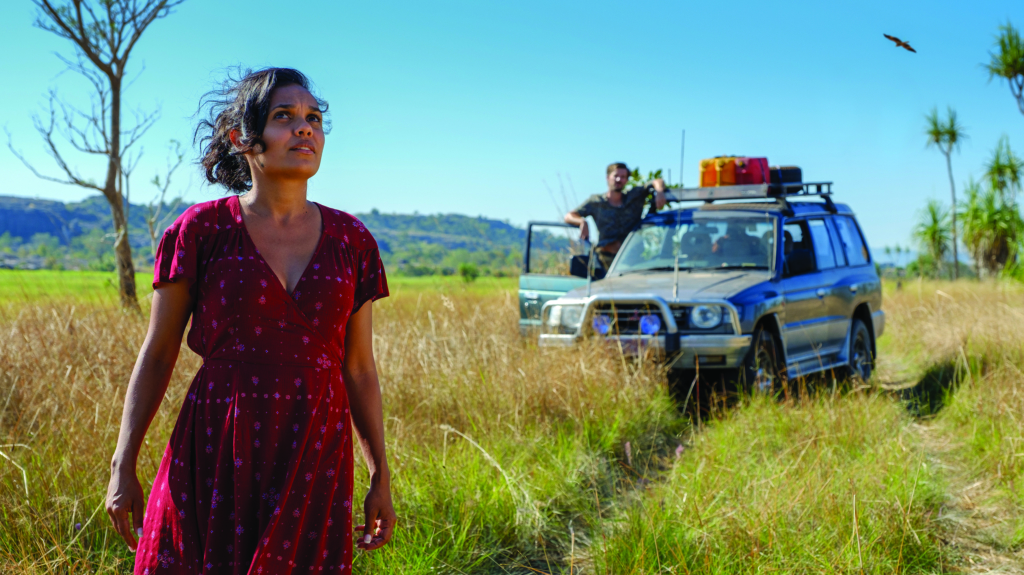
Australia, without an equivalent large-scale commercial film industry, has never seen the same levels of rom-com success or proficiency as the US; indeed, Australia’s key rom-com touchpoints predate the genre’s 2000s acme: 1994’s Muriel’s Wedding (PJ Hogan[4]Hogan went on to direct eventual Hollywood rom-com classic My Best Friend’s Wedding (1997).) and 1992’s Strictly Ballroom (Baz Luhrmann). Yet Top End Wedding neatly fits into the classic rom-com mould, hitting many of the genre’s notes – the ambitious woman; the severe, single boss; the dog; the best friends. But, most crucially, and strangely, it doesn’t ever play with the relationship between Lauren and Ned. There is romance, and there is comedy, but there is little comedy around the romance. Because of this, the film falters within the genre’s constructs – stakes that appear in the trailer are cut together from over the entire movie, so, when spread out over 113 minutes, they don’t appear as stakes at all. Romantic comedies hinge on the ‘will they, won’t they’; in Top End Wedding, despite Ned’s lies of omission about his job, this conflict never really feels in play.
Top End Wedding neatly fits into the classic rom-com mould, hitting many of the genre’s notes … But, most crucially, and strangely, it doesn’t ever play with the relationship between Lauren and Ned.
The ten-day time limit (a nod, perhaps, to a cynical classic of the genre, Donald Petrie’s 2003 film How to Lose a Guy in 10 Days) is arbitrarily set by Lauren’s workplace and compounded by her missing mother; at worst, the wedding will be postponed, and Blair never manages to convince us that this is a true hazard. The couple’s relationship itself doesn’t come into question until well into the second act. By then, we have already seen them in love for so long that the stakes here, too, feel odd and manufactured.[5]Interestingly, while Top End Wedding is clearly inspired by the last few decades of rom-coms, the only film it directly alludes to is Die Hard (John McTiernan, 1988), in the form of a macho subplot involving Ned and Trevor. The two sorrowful and non-macho men watch the film and embody a contrast to its machoism – until they need to find the strength to get to the chapel on time, and things take some decidedly John McClane–esque turns. Additionally, the comedy – particularly in the first act, as the film struggles to find its tone – is broad and slapstick: Lauren walking through the high-atriummed foyer of her law firm on tiptoes to disguise her broken heel; Ned making fun of the man at the airport wearing pyjamas, only for Blair to reveal that it is Trevor. Tapsell shines when portraying the kindness of Lauren, her smile and affect managing to eke out laughs from the stupidest of jokes, yet some story elements nevertheless feel disjointed. Some of the film’s best moments are its subtlest, such as Lauren’s ringtone for her boss being set to Yothu Yindi’s ‘Treaty’ – something Blair never draws great attention to, but tells us so much about these characters. There is, we feel, much more that could’ve been explored in the quiet.
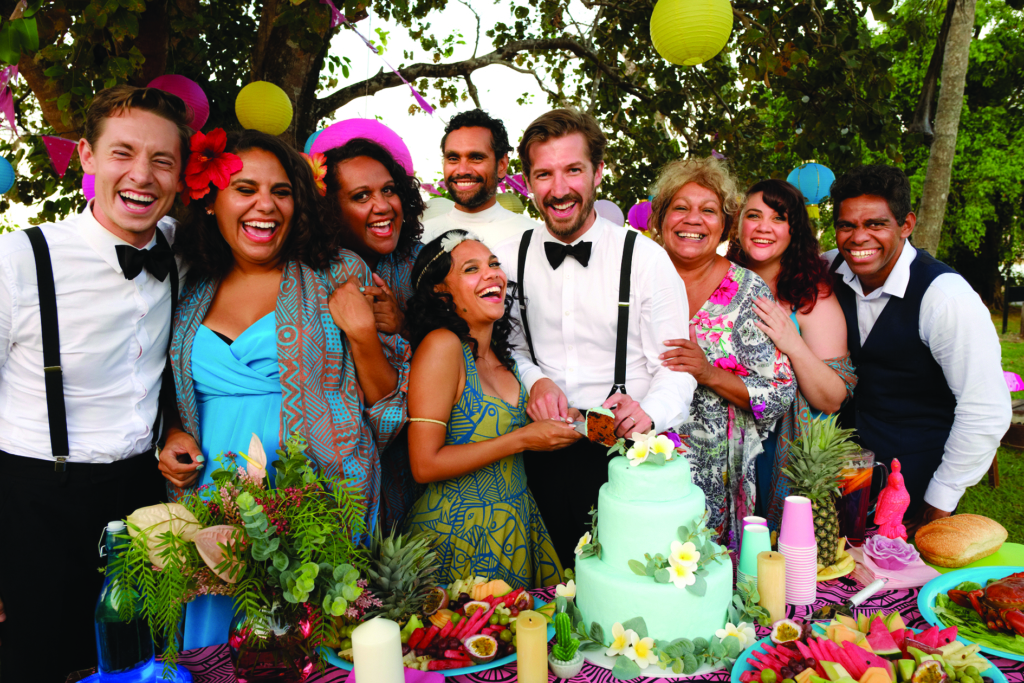
And there is much to love in the quiet spaces of this romance about a loving and tender cross-cultural connection, in which the man is truly honoured to be part of exploring his partner’s culture and relationship with country. The pair bumble through the awkward contours of the cultural divide, but always with heart and never with true stress.
Over the last decade, the rom-com has gradually become less prominent; in 2018, its US box-office market share was only 2 per cent, itself a four-year high.[6]‘Box Office History for Romantic Comedy’, op. cit. Arguably, this trend is due, in part, to the screen industries’ increasing investment in blockbuster sequels – with rom-com relationships often too resolved at the end of each film, the genre resolutely comprises standalone titles.[7]The Bridget Jones movies (2001–2016) are perhaps a notable exception. In this nascent era of streaming, however, the romantic comedy is finding itself anew. As streaming platforms like Netflix look not only to marketing to diffuse viewerships, but also to algorithm-guided artistic creation, this formulaic genre is experiencing a revival – except the recipe is being reconsidered by a new generation of screenwriters. Films like Set It Up (Claire Scanlon, 2018), Dumplin’ (Anne Fletcher, 2018)and To All the Boys I’ve Loved Before (Susan Johnson, 2018) are demonstrating that the romantic comedy can tell new stories and with new types of women. Sure, there is still the skinny, blonde, ambitious magazine writer in films such as A Christmas Prince (Alex Zamm, 2017), but she is increasingly giving way to characters such as the Asian-American lead in To All the Boys, the plus-size lead in Dumplin’, the black lead in The Incredible Jessica James (James C Strouse, 2017) and the queer lead in Alex Strangelove (Craig Johnson, 2018).
Away from Netflix, there is the rom-com that takes place around a hospital bed in the Oscar-nominated The Big Sick (Michael Showalter, 2017); the celebration of not dating in How to Be Single (Christian Ditter, 2016); and the one-night-stand and subsequent abortion that pave the way to romance in Obvious Child (Gillian Robespierre, 2014). There’s also the blockbuster love story of Crazy Rich Asians (Jon M Chu, 2018) and the Muslim-Australian romance of Ali’s Wedding (Jeffrey Walker, 2017). In each of these titles, we see the rom-com revitalised through an eschewal of formulaic narratives and/or formulaic casting.
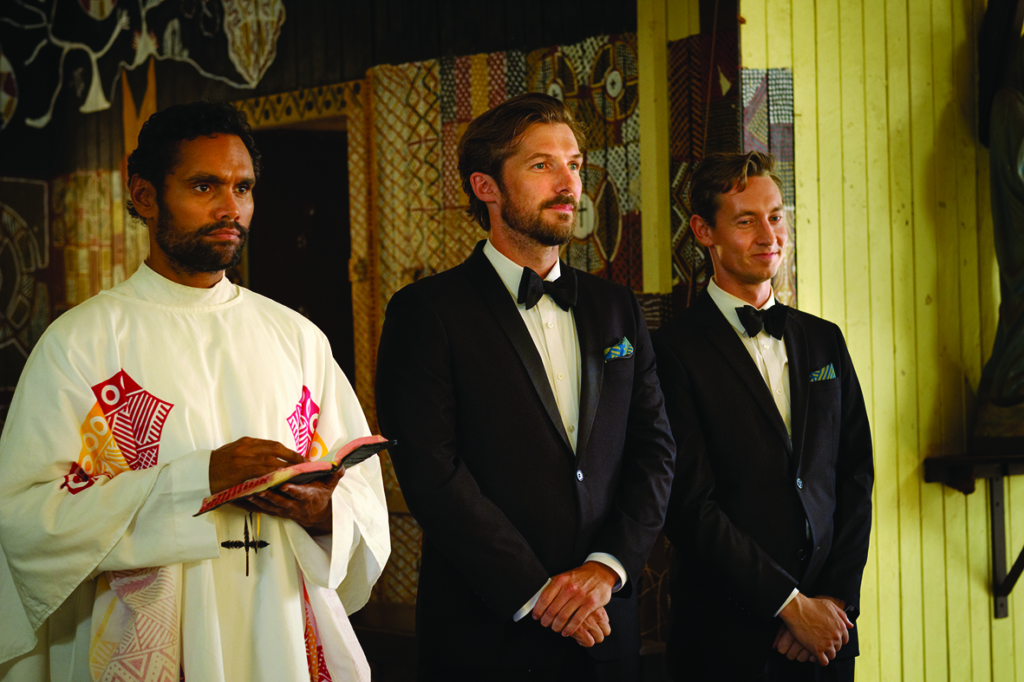
It’s in the midst of these exciting contemporary changes that Top End Wedding sits. While it has had a successful run in cinemas – and the big screen is where cinematographer Eric Murray Lui’s epic sweeps of sunlit, richly coloured Northern Territory landscapes deserve to be seen[8]The Northern Territory Government invested A$1.5 million dollars in the film, which it hopes will translate to tourism dollars; see Alexia Attwood, ‘NT Government Hoping Top End Wedding Movie Will Give Tourism a Boost Following Premiere’, ABC News, 16 April 2019, <https://www.abc.net.au/news/2019-04-12/top-end-wedding-movie-hoped-to-raise-nt-tourist-numbers/10993868>, accessed 9 May 2019. – it feels like online streaming will be where Top End Wedding truly finds its feet. Because, much like the other successful examples of the genre today, Top End Wedding flourishes when it lets go of the conventions of the romantic comedy. For much of the film, it feels as if Blair, Tapsell and Tyler are reaching for the classics of the genre and falling short; however, in the third act, after properly shedding convention, the movie comes alive. It is revealed how the tension in the film is not one of romantic love, but of familial love and love of country and place.
In Act 1, as Lauren and Ned fly north, a cartoon plane traces their journey: not over two states, but over dozens of Indigenous countries. It is within this separation that the film positions its stakes: not between a man and a woman, but between Lauren’s life in Adelaide and her pining for the Tiwi Islands, the land she comes from but has never set foot on. Lauren and Ned’s relationship isn’t in jeopardy; it never was. What is in jeopardy is Lauren’s relationship with country. Lauren thinks she knows what she’s missing: she misses her home town, Darwin, and misses Daffy (indeed, she spends much of the film looking for her mother). But, like all rom-com leads, she doesn’t truly realise what she has been missing until she is standing in front of it – something that doesn’t crystallise until the film’s third act. What she hasn’t realised is how much she could miss the Tiwi Islands – how this longing could be inherited from a mother who left this place, and never admitted to her own self how much she missed it, too.
On the islands, Blair mixes his professional cast with actors from the local community, including the Wangatunga Strong Women’s Group choir (also known as Ngarukuruwala), who all perform in language; these gentle renditions, especially from Bernard Tipiloura and Lynette Marie Johnson, who play Lauren’s grandparents, provide the depth and heart the film was missing. Nevertheless, Blair does inspire affecting renditions from his cast: Ned is a kind yet awkward suitor trying to build a relationship with the dishevelled Trevor – a bromance tacked onto a rom-com. Hampton is kinder than she first appears, Fox intelligently toying with being both icy and lovingly strict. Lauren’s best friends and bridesmaids (Shari Sebbens, Elaine Crombie and Dalara Williams) are a chorus of support, heart and slapstick, showing the complexities of friendship but also embodying a multiplicity of Aboriginal women – something that is still too rare on Australian screens. And Yovich gives a masterclass in how to act through silence as a woman who is lost and struggling, until she smiles with enough power to turn a cinema audience to tears.
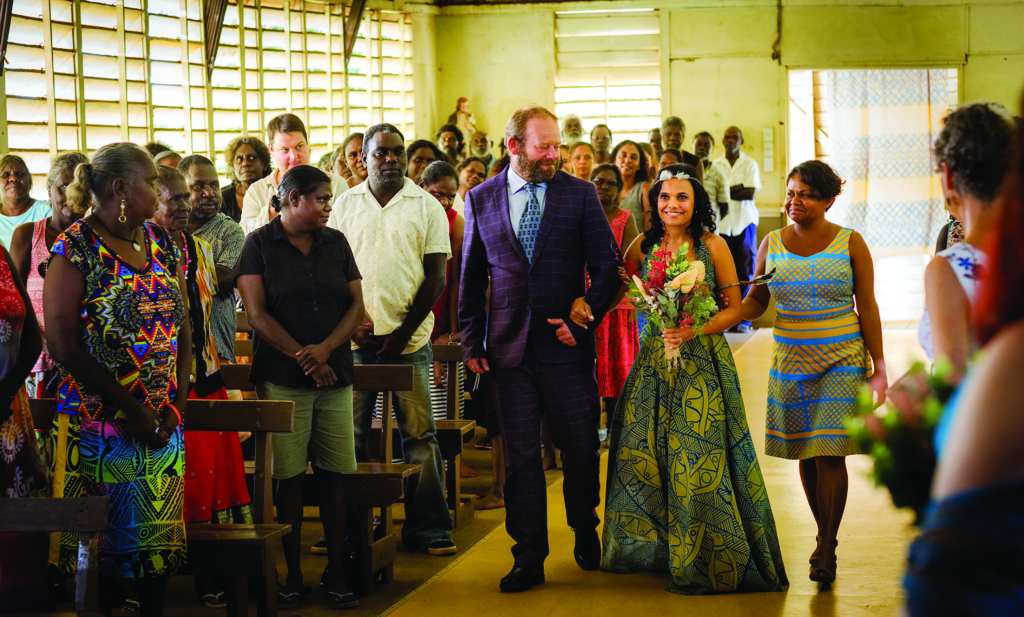
The challenge Top End Wedding faces is carrying the audience through the awkward first act so they are ready for this remarkable pay-off. For a lesser actor than Tapsell, this might not have been worth it. But thanks to Tapsell, and the top end itself, the film succeeds. The Northern Territory is the true co-lead of Top End Wedding. The colour grade, which looks artificial when cast over Adelaide’s urban greys, soars when placed over the red and green top end. Tapsell, already affable and open at the beginning, expands amid the beauty of the Northern Territory as the film becomes a road movie: while she looks at Lee with love, it is nothing compared to the way her eyes trace over the steep cliffs of Nitmiluk National Park’s Katherine Gorge from a gliding boat or the cool grey water in the gulf as she stands barefoot on the smooth sand.
Today’s female rom-com leads are no longer just hapless romantics. We are seeing interesting shifts in the genre as it enters a new era in which women’s stories are told differently, and Top End Wedding, for all its flaws, seems to be heralding the Australian strand of this movement. Rom-coms, at their heart, are about joy – and Tapsell certainly brings this joy to her first script, along with a deep love of the genre and an interest in questioning its limitations and boundaries. On screen, she portrays the film’s leading lady with an infectious spirit and a formidable smile. Watching her work as both writer and actor, it feels like there will be many more Tapsell-driven romantic comedies to come; as in all rom-coms, it will perhaps just take a few wrong turns before we get there.
Endnotes
| 1 | See Caroline Siede, ‘After When Harry Met Sally, Almost Every Rom-com Tried to Have What Nora Ephron Was Having’, The A.V. Club, 16 March 2018, <https://www.avclub.com/after-when-harry-met-sally-almost-every-rom-com-tried-1823690771>, accessed 21 May 2019. |
|---|---|
| 2 | See ‘Box Office History for Romantic Comedy’, The Numbers, <https://www.the-numbers.com/market/genre/Romantic-Comedy>, accessed 9 May 2019. |
| 3 | While black rom-com leads did exist during this era – including those played by Gabrielle Union, Sanaa Lathan and Vivica A Fox – their stories never received the budgets and subsequent box-office success that movies about white women did. As cases in point, the Fox-starring Two Can Play That Game (Mark Brown, 2001) made US$22.4 million worldwide from a budget of US$13 million, while the Ryan vehicle Kate & Leopold (James Mangold), released that same year, amassed US$70.9 million with a US$48 million budget; see ‘Two Can Play That Game (2001)’, The Numbers, <https://www.the-numbers.com/movie/Two-Can-Play-That-Game#tab=summary>; and ‘Kate and Leopold (2001)’, The Numbers, <https://www.the-numbers.com/movie/Kate-and-Leopold#tab=summary>, both accessed 10 May 2019. |
| 4 | Hogan went on to direct eventual Hollywood rom-com classic My Best Friend’s Wedding (1997). |
| 5 | Interestingly, while Top End Wedding is clearly inspired by the last few decades of rom-coms, the only film it directly alludes to is Die Hard (John McTiernan, 1988), in the form of a macho subplot involving Ned and Trevor. The two sorrowful and non-macho men watch the film and embody a contrast to its machoism – until they need to find the strength to get to the chapel on time, and things take some decidedly John McClane–esque turns. |
| 6 | ‘Box Office History for Romantic Comedy’, op. cit. |
| 7 | The Bridget Jones movies (2001–2016) are perhaps a notable exception. |
| 8 | The Northern Territory Government invested A$1.5 million dollars in the film, which it hopes will translate to tourism dollars; see Alexia Attwood, ‘NT Government Hoping Top End Wedding Movie Will Give Tourism a Boost Following Premiere’, ABC News, 16 April 2019, <https://www.abc.net.au/news/2019-04-12/top-end-wedding-movie-hoped-to-raise-nt-tourist-numbers/10993868>, accessed 9 May 2019. |
